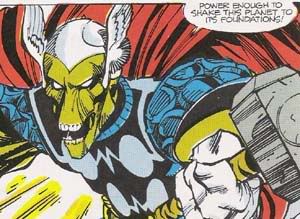ADD wants to know what TV shows I watch. Barely any (fortunately or unfortunately, depending on how you look at it, I guess).
As I mentioned
a few months ago in a post about
Buffy The Vampire Slayer, due primarily to my girlfriend’s concerns that she was losing time in front of the tube that could be better spent working on academic endeavors, somewhere around a year and a half ago she asked if I’d be willing to join her in a month-long TV fast. After the month was over, neither of us missed it, and we’ve been TV-free ever since. Well, for the most part. My girlfriend hooked up rabbit ears temporarily to watch last year’s Oscar Awards, but other than that the TV signals have found no home in our apartment.
I catch bits and pieces of TV sporadically: sometimes while visiting my parents, sometimes at my night job when there’s just nothing else to do, and sometimes in the food court or various lounges of my school.
As far as TV is concerned, I’ve become the television audience member version of the “TPB only” guys. As a consumer, I think the best perk of the DVD age has nothing to do with the sound or picture quality, or the special features (which I usually don’t care about except when they’re as thorough and entertaining as the stuff you find on the extended
Lord of The Rings DVDs, and even then they can be TOO thorough–e.g., like many American geeks I harbor some healthy ill will towards George Lucas, and suspect that the hack continues to make films simply so he can make the “Making Of” specials–and while I realize this tangent is becoming much too forked for merely one pair of parentheses, I do have to point out that his prequel special features seem to act as proof of his enduring hackery–watch the feature on
The Phantom Menace regarding how he chose the young Anakin Skywalker, and you just try to tell me that BOTH of the other kids he looked at didn’t blow away the little shit he finally tapped for the role). No, the best thing about the death of VHS is the collecting of whole seasons of TV shows in (sometimes, not) relatively affordable format. Sure, I love the fact that I can get some of my favorite films like
Fight Club or
Bladerunner on DVD, but offer me two hours of
The Incredibles for $15-$20 versus twenty-plus hours of
Buffy The Vampire Slayer for $40-$50, and it’s really no damn contest.
And there’s NO. FUCKING. COMMERCIALS. I can’t emphasize that enough. My girlfriend will attest to the fact that, before we discarded the rabbit ears for good, it was not uncommon for me to throw things at the TV during commercial breaks (nothing breakable, usually). In our particular region of NY, we have perhaps one of the most annoying series of local commercials in the world. There’s a fat guy with a bunch of Dodge dealerships named “Fuccillo” who ends all of his spots by letting us know his savings are huge. Or, more accurately, they’re “Hu-YOOOOOOOOOOOOOO-JUH!” I can actually forgive the “Hu-YOOOOOOOOOOOOOO,” but not the “JUH!” The “JUH!” is a fucking deal-breaker. And what really irks me is the fucker apparently records new spots every few days in order to get a wide, diverse variety of “JUH!”s. Ironically enough, the guy whose local commercials were almost as bad, a mattress outlet owner, has disappeared ever since the rise of the “JUH!” I recall back when I worked an all-night shift at a bagel shop when I listened to the radio, the guy had radio spots that were literally around two to three minutes long. The fact that his TV and radio spots have quietly disappeared make me suspect he’s either affiliated with Fuccillo or maybe even got whacked by the guy. There was definitely a recognition, either solely on Fuccillo’s part or both if they’re allied, that even the silly American monkey consumers could only take so much Dow Syndrome-esque advertising before they rose up and killed all the bastards. “There’s only room enough in this town for one greedy, stupid asshole who’s such an idiot on TV that some suburban asshole will think he’s actually cute...and that’s me.” My girlfriend and I do NOT drive people off the road every time we see their back license plate framed with “Fuccillo Dodge,” but only because we’d get in big trouble if we did. Huge trouble. Juh.
Despite my initial concerns when we first started getting TV seasons on DVD, in the cases of shows like
Buffy where a good deal of the suspense hinges on cliffhangers, the fact that we don’t have to wait a week or a whole season for the resolution doesn’t seem to take away from the enjoyment. Sure, the answer to what Willow will do after her girlfriend gets blown away is only a click of the remote away, but as much as I like having hours and hours of
Buffy at my fingertips, that doesn’t mean I have the time to watch large chunks in one sitting. When we started collecting the
Buffy seasons on DVD, my girlfriend and I would watch most of the episodes together and when we finally did get to the big season climaxes, it would be a genuine event, just as good–in my opinion anyway–as going out to dinner or a movie. And we didn’t have any huge, juh bullshit to sit through, either.
That said, we don’t have nearly as many shows on disc that I’d like. But you know, we do have to do stupid things like pay rent and stuff. We’ve got all seven seasons of
Buffy, season one and two of
Aqua Teen Hunger Force, season one of
Space Ghost Coast-to-Coast, season three of
The X-Files, the entire
Band of Brothers and
Tenacious D series, the first
Batman The Animated Series collection, a mighty fine gaggle of
Mystery Science Theater 3000 shows (with Joel, of course, we’re not fucking heathens), and maybe a half-dozen or so episodes of
The Powerpuff Girls.
Okay. So, actually, it seems we have a hell of a lot more TV shows on DVD than I thought.
Me still want more, though. More, more, more.
Like ADD, I wasn’t always happy with the various
Star Trek spin-offs. There are a few episodes of
Star Trek: The Next Generation that I would love to own (specifically, the ones I mentioned in
my post regarding the overuse of time travel), though unless I spontaneously become independently wealthy, I’d have a hard time buying an entire season.
I like what I’ve seen of
West Wing, but I have a problem with it. It’s the same problem I had another show of Aaron Sorkin’s–
Sports Night. It’s the same problem I have with
Gilmore Girls and it’s the same problem I have with a lot of Kevin Smith’s films (and every time I mention this, just about everyone in my age group looks at me like they want to lynch me).
People just aren’t that fucking witty off-the-cuff. I know. I know. It’s fucking fiction, I know. People don’t fly and shoot lasers out of their eyes either, but my suspension-of-disbelief sensors don’t seem to have a problem with it. I know. Honestly, I don’t necessarily consider this a failing of Sorkin’s, Smith’s, or Amy Sherman’s (
Gilmore Girls writer), just a pet peeve of my own. When I listen to this kind of 100-mile-an-hour, witty dialogue, it just makes me think “Okay, someone thought of every awesome comeback they never thought of at the times when it would’ve been most useful, wrote them all down, and called it
Mallrats.” It just seems like written masturbation to me, which doesn’t mean much coming from a guy who spends a good deal of time writing about comic books and superheroes for free. Like I said, it’s just my thing. Not their fault. Just a little pet peeve of mine. Just a little one. Juh.
I would love to have at least a few more
X-Files seasons on disc, but not only have I only been able to find the horrible final season in my local stores, but they’re just too damn expensive. Compare the # of shows on the
Buffy DVDs to the shows on the
X-Files collections, even considering the more extensive special features in the
Buffy collections, I really don’t know what the hell I’m paying for (If I recall correctly, I can usually get a
Buffy season for around $40/$50, whereas the cheapest
X-Files seasons are around $90, usually closer to $120-$150). I think I’d be willing to dish out some dough for the fourth season, but not much else. Unlike most
X-Files fans, the “mythology” episodes tend to be my least favorite. I’d much rather watch “Jose Chung’s From Outer Space,” “Clyde Bruckman’s Final Repose,” “Bad Blood,” or “Postmodern Prometheus” than all that bullshit with the unnaturally eloquent and incredibly UN-scary Smoking Man and Krycek with his Skinner-killing palm pilot. If Duchovny’s career ever descends so far that he finally nods to another
X-Files film, while I know I would be in a very small minority, I’d rather they deal with something purely supernatural than more alien mythology crap.
And forgive me any readers who never watched the show regularly, but did anyone else ever have a problem with the fact that Mulder was always beating the shit out of Krycek? Especially in that two-parter where they go to Russia, Mulder LAPD’s Krycek every few minutes, whereas I think anyone with a pair of working eyes could tell that Krycek could take Mulder’s collection of
The Foundation Trilogy and stuff it up his ass so far Isaac Asimov would spurt out of his mouth in about two seconds flat. I don’t know. Maybe it’s just another pet peeve of mine. Juh.
Twin Peaks absolutely blew my mind when I first saw it, and as is usually the case, I didn’t catch it until a few years after it was all over. When I was at school in Florida, a friend told me I should check out the
Twin Peaks marathon on Bravo. I missed some pretty big chunks of it, but while I know a lot of folks were unhappy with the end of the final episode (which, from what I understand, was not meant to be the final episode), it kicked my ass and my ass liked it. I was literally shaking the next day.
The thing I love the most about
Twin Peaks is that it handled the supernatural in a unique way. I think too much supernatural fiction (in any medium) suffers from what I call the “stake in the heart” failing. In other words, it turns the supernatural into a science (and The
X-Files is a good example of this though I do like the show, but let’s forget about that because, well, it weakens my argument, duh). The best example I can think of is perhaps my least favorite Stephen King short story, “The Mangler.” Some guy figures out this laundry press is evil (I’m not kidding). He consults this other guy, who somehow is an expert on evil spirits that possess laundry presses, who explains to him what he has to do to expel the spirit from the thing. He says something like, “You’re lucky it’s not this other so-and-so god, cause he’d eat bibles up like candy.” Okay, so that’s not verbatim, but it was the dumbest line of dialogue I’d ever found in a King story. Who the fuck calculates how many fucking Bibles you need to expel evil gods from laundry presses? It’s just stupid. And then, of course, the big twist at the end is that it IS, in fact, the many-bible-eating god who possesses the evil laundry press. Shirts everywhere cry in aguish. KHAAAAAAAAAAAAAN!!!!!!!
It just seems like the usual format of stories featuring supernatural threats is that they start off with an air of mystery and terror, then the hero(es) run into some Giles-like guy who apparently exists only to study up on mysterious and supernatural stuff: “Yes, you must throw a pinch of blessed salt over your shoulder while crapping wooden stakes into the beast’s heart and showing it its own reflection because we all know evil things can’t stand their own reflections...5 o’clock shadow infests their meaty visages.” And the result is that the supernatural isn’t so supernatural anymore. It’s for similar reasons that I applaud Kurt Busiek’s promise to never release a much-requested
Astro City role playing game: the fact that the heroes of his comic (still one of the best superhero books on the market in my opinion) haven’t been whittled down to the stupid how-much-tonnage-can-they-lift and how-fast-can-they-fly statistics is part of what helps them keep their mystery.
Twin Peaks hinted. It didn’t tell. It kept the supernatural mysterious, and the supernatural SHOULD be mysterious. Despite the fact that I’ve watched every episode as well as the film
Twin Peaks: Fire Walk With Me, I’ll never be able to fully explain to anyone who Mike is, or Bob, or the little guy in red, or the freaky kid in the mask, etc., and I like it that way. All I can assure you is that there’s a shelf somewhere in the Black Lodge reserved for FBI Agents (most of whom, apparently, enjoy successful singing careers before suffering mediocre acting stints–forgive me, my lovely girlfriend, I get precious few chances to make fun of David Bowie on a blog concerning comic books and superheroes, and I will take what opportunities I can get).
I’m also a fan of the various
Law & Order shows, though I think there’s a very obvious failing with all of them which would make me think twice before getting them on DVD. As soon as someone shows up on camera–who is NOT a member of the regular cast–if the actor playing the character has been in a movie, you know they did it. I recall annoying my girlfriend once when she was in California visiting her family, and I was laying on the futon, watching
L & O. In the middle of a sentence, I stopped and shouted “SHE DID IT!” I’m not particularly good at figuring out whodunnits, I simply recognized the actress in question as the woman who played Helen Hunt’s mother in
As Good As It Gets. And yes, she ended being the one whodunnit. This rule isn’t always true, but it won’t steer you wrong in most cases.
I particularly enjoy watching
Law & Order: Criminal Intent with my girlfriend. One of her most intense celebrity crushes is for Vincent D’Onofrio, giving me the opportunity to make fun of him for the entire hour
The only problem I have with his character–and his acting is superb–is the fact that he’s a cop. Or, more to the point, he’s a cop with rank. In other words, I could easily see his character as kind of an eccentric consultant-to-cops like the ones found on
Monk or (God help us)
Millenium, but I have a real problem imagining any police officer standing there and dutifully nodding to his orders without burying their billy clubs into his skull and yelling “STOP MOVING YOU TWITCHY BASTARD!”
Well, this thing is already 10 times longer than it had to be. I guess I haven’t blogged in so long, I made up for my absence with a vengeance.
P.S. I would also love to watch more of the various
Justice League stuff, but I'm waiting for them to release some substantial collections.
P.P.S. WHERE THE HELL IS MY
THE TICK DVD COLLECTION?!?!
P.P.P.S. Not the live-action, that doesn't count.
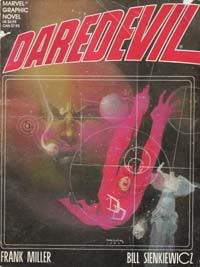 Hoping to cure his wife’s mysterious illness, Kingpin forces a French doctor to care for her by hiring a deranged thug to kidnap the doctor’s beautiful wife. As is usually the case, Daredevil gets involved, and what results is a disturbing and disarmingly intimate tale of violence and the multi-layered relationships this particular conflict spawns.
Hoping to cure his wife’s mysterious illness, Kingpin forces a French doctor to care for her by hiring a deranged thug to kidnap the doctor’s beautiful wife. As is usually the case, Daredevil gets involved, and what results is a disturbing and disarmingly intimate tale of violence and the multi-layered relationships this particular conflict spawns.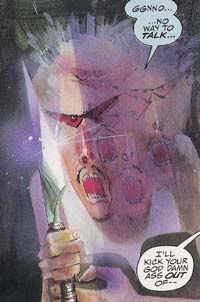 The irony for me is that when I was just a little Hulkling I avoided Sienkiewicz books like they were vegetables. I think the only Sienkiewicz book I ever bought as a child was an issue of New Mutants (and only because it was a part of the “Mutant Massacre” crossover). Other than that, I saw his work only in the pages of my brother’s comparatively meager collection. Those weird, extended, flat heads and the impossibly thin bodies of characters like Cannonball and Legion were just too disturbing for my young mind. Somehow, watching green people beat the shit out of each other didn’t bother me nearly as much as a Sienkewicz-rendered Sam Guthrie doing something as simple as slouching against a wall or talking to a friend.
The irony for me is that when I was just a little Hulkling I avoided Sienkiewicz books like they were vegetables. I think the only Sienkiewicz book I ever bought as a child was an issue of New Mutants (and only because it was a part of the “Mutant Massacre” crossover). Other than that, I saw his work only in the pages of my brother’s comparatively meager collection. Those weird, extended, flat heads and the impossibly thin bodies of characters like Cannonball and Legion were just too disturbing for my young mind. Somehow, watching green people beat the shit out of each other didn’t bother me nearly as much as a Sienkewicz-rendered Sam Guthrie doing something as simple as slouching against a wall or talking to a friend. 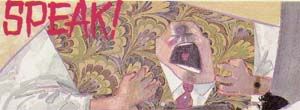
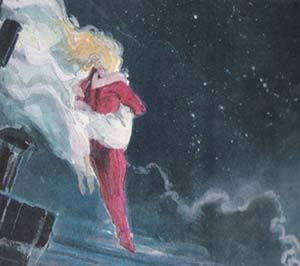

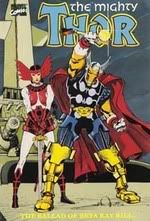 Due to my alliances regarding
Due to my alliances regarding 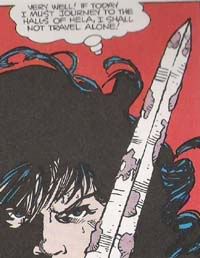 While you expect Thor to play second fiddle to Beta Ray Bill - considering both the subtitle of the trade as well as Thor’s absence on the cover - what’s genuinely surprising is that he doesn’t play second fiddle. More like fourth or fifth fiddle. He’s the focus of the first issue - when Bill is first introduced as an antagonist - but after that the tragically heroic Bill, the heartbroken Sif, a disillusioned Balder, and Big-Thor-Daddy Odin loom larger in the story than the guy whose name adorns the cover (Dear Bruce Jones: Take notes). It’s difficult for me to say this is a “welcome change” since I’m so unfamiliar with Thor, though it was a pleasant surprise.
While you expect Thor to play second fiddle to Beta Ray Bill - considering both the subtitle of the trade as well as Thor’s absence on the cover - what’s genuinely surprising is that he doesn’t play second fiddle. More like fourth or fifth fiddle. He’s the focus of the first issue - when Bill is first introduced as an antagonist - but after that the tragically heroic Bill, the heartbroken Sif, a disillusioned Balder, and Big-Thor-Daddy Odin loom larger in the story than the guy whose name adorns the cover (Dear Bruce Jones: Take notes). It’s difficult for me to say this is a “welcome change” since I’m so unfamiliar with Thor, though it was a pleasant surprise. 